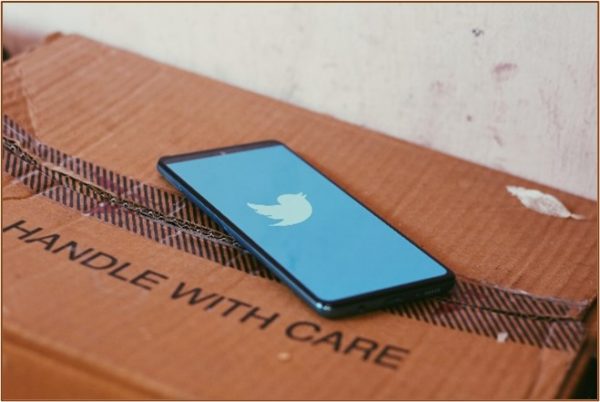
In early February 2021, the Indian government ordered Twitter to censor “more than 250 accounts belonging to activists, political commentators, a movie star, and … an investigative news magazine” (Dixit, 2021). Twitter initially complied with the order, but, after consulting “with IT ministry officials,” the platform restored the accounts and content under the justifications of free speech and newsworthiness (Dixit, 2021). The Indian government subsequently threatened to fine or jail Twitter employees in the country if they did not comply with government orders. In late May 2020, the Dehli police visited Twitter offices in Dehli and Gurugram “to serve notice” that they would be investigating the company (Tribune, 2021).
The Indian government has repeatedly argued the content they want censored threatens public safety and contains misinformation (Frayer & Bond, 2021). There are those who argue that—with India’s history of communal violence (PTI, 2011) which last year erupted into Delhi’s worst riots in decades (Frayer, 2020)—government action to prevent unrest is pivotal. Laws in India ban online distribution of inciteful or defamatory materials, giving Prime Minister Narendra Modi the ability to “issue emergency blocking orders against tech platforms” (Frayer & Bond, 2021). However, the majority of the briefly censored material opposed Modi or the actions of the BJP (Dixit, 2021). Caravan, the award-winning news magazine whose account was temporarily suspended, has repeatedly run into problems with the Indian government, yet was not using any of the content or hashtags cited as objectionable (Frayer & Bond, 2021).
Given Twitter’s recent moves to block then-President Donald Trump in the U.S., Indian users and journalists said it was “a shock to see such an important social media company actually getting bullied” in India (Frayer & Bond, 2021). More recently, Twitter has expressed a desire to “continue to engage openly and constructively keeping alive the spirit of public conversations during a crisis” (Phadnis, 2021). Twitter also claims to have “a level of transparency that is unique in the industry” when it comes to such censorship requests (Phadnis, 2021). Yet it is unclear if open communication with affected users and publication of any government directives is sufficient. Twitter is running into a struggle in India—and elsewhere around the globe—“between its professed values, its business interests in a fast-growing market, and increasing pressure to remove speech that governments don’t like” (Frayer & Bond, 2021). Government regulations, like those in India, could at once be instrumental to stemming the flow of misinformation, but could also be abused to silence political opposition.
The debate is not one of whether a government censoring dissent is permissible. Instead, the ethical quandary is whether, as journalist Pranav Dixit summarizes, Twitter should block the accounts and be “accused of playing an active role in an ongoing crackdown on dissent in India” or “[risk] a political and legal shutdown in a major market” (2021). It is ethically imperative to refuse censorship or to save what speech the platform can? This debate has become a matter Twitter’s future on the subcontinent. The tech company and the Indian government share a professed value: promoting the truth and weeding out misinformation. Yet, the dominance of Modi’s BJP coupled with India’s history of political and religious violence potentially makes these values an easy cover for unwarranted censorship.
At the same time as Twitter and the Indian government are engaged in a battle of wills, people in India are using the platform to save lives. For example, Jeevika Shiv—a lawyer and member of a volunteer medical support group—had no luck finding a hospital bed for a desperately sick COVID patient through traditional channels but found one efficiently via Twitter (Kalra & Ghoshal, 2021). Amidst a wave of COVID that sees 250,000 new cases a day in India, people are “turning to Twitter to crowdsource help for oxygen cylinders, hospital beds” and other needs (Kalra & Ghoshal, 2021).
On the other hand—as Prateek Raj, Assistant Professor at the Indian Institute of Management in Bangalore point out—Twitter is not a universal or blameless force for good. Twitter’s algorithms promoted an economic boycott of Muslim businesses amidst the aforementioned Delhi riots that killed 53 people, most of whom were Muslims, and allowed #CoronaJihad to trend less than two months later as the pandemic ramped up (Raj, 2021). Beyond being creating “an ecosystem that emboldens hate speech,” Twitter is “used as a propaganda machine” by various groups and “is a favored platform for spreading misinformation, [and] disinformation” (Raj, 2021). Both Twitter and the Indian government have an ethical obligation to curb the spread of misinformation. The question is what kinds of government regulations and company protocols can do this without engaging in censorship or promoting propaganda.
Discussion Questions:
- Can Twitter balance the importance of providing a platform for free expression without undermining democratic systems?
- What kinds of regulations might balance the value of free speech without neglecting the spread of misinformation?
- What, if any, ethical obligation does Twitter have to users in India? Is the Indian context different from the struggles Twitter faces in among American users and policy makers?
- Is Twitter most beholden to the Indian government, its employees, or its users?
Further Information:
Pranav Dixit, “Twitter unblocked accounts that criticized India’s government. Now, its employees are being threatened with jail time unless it blocks them again.” BuzzFeed News, February 3, 2021. Available at: https://www.buzzfeednews.com/article/pranavdixit/india-threatens-twitter-jail
Lauren Frayer, “Delhi riots aftermath: ‘How do you explain such violence?’” NPR, March 7, 2020. Available at: https://www.npr.org/2020/03/07/812193930/delhi-riots-aftermath-how-do-you-explain-such-violence
Lauren Frayer & Shannon Bond, “Twitter in standoff with India’s government over free speech and local law.” NPR, February 18, 2021. Available at: https://www.npr.org/2021/02/17/968641246/twitter-in-standoff-with-indias-government-over-free-speech-and-local-law
Aditya Kalra & Devjyot Ghoshal, “Twitter becomes platform of hope amid the despair of India’s COVID crisis.” Reuters, April 27, 2021. Available at: https://www.reuters.com/world/india/twitter-becomes-platform-hope-amid-despair-indias-covid-crisis-2021-04-21/
Shilpa Phadnis, “Twitter clarifies on government requests.” The Times of India, April 30, 2021. Available at: https://timesofindia.indiatimes.com/india/twitter-clarifies-on-government-requests/articleshow/82319797.cms
PTI, “Chronology of communal violence in India.” Hindustan Times, November 9, 2011. Available at: https://www.hindustantimes.com/india/chronology-of-communal-violence-in-india/story-jJtcgvxFYh5N3jhSw7H4KN.html
Prateek Raj, “How Twitter weakened India’s information ecosystem.” Promarket, May 7, 2021. Available at: https://promarket.org/2021/05/07/twitter-india-information-ecosystem-covid-19/
The Tribune, “Twitter breaks silence after police raid, alleges intimidation over ‘manipulated media’ tags.” The Tribune, May 28, 2021. Available at: https://www.tribuneindia.com/news/nation/twitter-breaks-silence-after-police-raid-alleges-intimidation-over-manipulated-media-tags-259261
Authors:
Dakota Park-Ozee & Scott R. Stroud, Ph.D.
Media Ethics Initiative
Center for Media Engagement
University of Texas at Austin
October 26, 2021
Image: Ravi Sharma on Unsplash
This case was supported by funding from the John S. and James L. Knight Foundation. These cases can be used in unmodified PDF form in classroom or educational settings. For use in publications such as textbooks, readers, and other works, please contact the Center for Media Engagement.
Ethics Case Study © 2021 by Center for Media Engagement is licensed under CC BY-NC-SA 4.0



